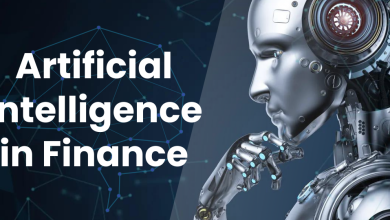For developers on the front line, AI has emerged as a go-to tool for boosting productivity and speeding up deployment, whether in day-to-day work or during intense peak season periods. Yet while its benefits are clear, the growing responsibility to modify and verify AI output is also introducing new pressures.
A recurring theme across organisations is that AI doesn’t necessarily reduce workload, it often increases expectations. Teams are leaner than in more generous funding periods, but the demand for higher productivity continues to climb. Leadership also now expects developers to adopt AI as a baseline skill, and even performance evaluations can hinge on whether an engineer embraces the latest tool. These pressures are only magnified during busy peak seasons.
Now, the question is whether AI is genuinely reducing stress for tech teams, or simply reshaping it in new, less obvious ways.
AI in the software development lifecycle (SDLC)
AI is showing up at nearly every stage of the SDLC. Feature planning tools are helping teams draft requirements and user stories. Testing tools can now auto-generate test cases, release automation platforms are streamlining deployment pipelines, and monitoring systems are detecting anomalies and performance issues in real time.
During crunch cycles, this means developers can move faster through repetitive work. Developer and tech teams are seeing more adoption during the earlier phases of the SDLC, where bugs and anomalies can be caught earlier, and quality control can be achieved at a faster pace.
Yet, the immaturity of many AI systems brings risks. Hallucinated outputs, untrustworthy test cases, novel security risks, or poor-quality code can increase the debugging load in later stages, right when teams are already under maximum stress. In this instance, AI becomes a double-edged sword, helpful for early acceleration but still requiring a human safety net when the stakes are high.
Cognitive and behavioural load
For most of their working days, developers are balancing firefighting, debugging, urgent requests and maintaining uptime. Adding AI into the mix means engineers must also decide which tool to use, when to trust its output, and how to verify results. Additionally, AI devtools are a fast-moving space and it’s impossible to keep up when new models launch and products update daily. This decision-making burden can itself be stressful. Dozens of AI coding agents promise productivity gains, yet each come with strengths, weaknesses, and constantly changing capabilities.
Cost also adds pressure. Since some AI coding agents are priced per request, developers may need to ration usage during crunch periods. Companies that once encouraged free-flowing experimentation are now asking engineers to be more judicious. This introduces a subtle but significant stressor: the need to weigh not only technical accuracy but also economic efficiency in real time.
Despite the challenges, AI is undeniably reshaping developer behaviour. One major change is in prototyping. Technically adjacent team members such as project managers and designers can now answer their own technical scoping questions more easily, spinning up lightweight proofs of concept and even building functioning prototypes with the help of vibe coding. This shift speeds up experimentation and takes some initial pressure off engineering teams, who no longer need to devote time to every early idea.
However, the complexity returns when prototypes move into production-ready features. AI-generated code may work for a demo, but it often requires careful review and refinement before it can be integrated into real systems. Reading code is harder than writing code, and ultimately engineers remain responsible for understanding every line they push to production.
Dealing with peak season stress
Every industry has its own “peak season”. Those crunch periods where systems need to perform flawlessly, and the people behind them are pushed to their limits. For retailers, it’s holiday shopping surges. For financial services, it’s end-of-year reporting. For entertainment platforms or game developers, it might be a major product launch or live-streamed event. In all these cases, the responsibility often falls heavily on technology teams: engineers, developers, and operations staff who must ensure uptime, fix bugs under pressure, and deploy updates at speed.
When something goes wrong, peak season stress can escalate quickly, sometimes even tipping into burnout. Challenges like software release errors or unexpected issues can disrupt team productivity, efficiency, and morale, making it harder for organisations to maintain stability during critical periods.
The impact of AI on stress and burnout in peak seasons ultimately comes down to redistribution. Whilst AI does relieve pressure by handling those repetitive tasks, and catching bugs and anomalies earlier, the added responsibility and uncertainty it brings is creating a new form of anxiety for developers. Increased expectation, mistrust in AI generated output and the wide variety of AI tools and choices available do not eliminate peak season stress, it just shifts its focus.
Finding the balance
Finding the balance between speed and responsibility is crucial. AI can be a powerful ally in reducing workload and speeding up early development, but it must be used with care.
For tech and development teams, especially during peak seasons when the stakes are highest, the key is not blind reliance but thoughtful adoption—leveraging AI’s strengths while accounting for its risks.
Cultivating a culture of experimentation and learning, especially during off-peak periods, helps as well. In doing so, teams can capture the benefits of faster iteration without sacrificing the reliability and accountability that are non-negotiable in production.




